Nuts and Bolts
The intense effort and partnership behind restoring fish habitat on a remote Alaskan island
This summer, Trout Unlimited completed a major restoration project on Kuiu Island in the Tongass National Forest
- 9 fish blocking culverts were removed
- 5 were replaced with new fish-friendly culvert designs and
- 4 were replaced with water bars and drivable fords that allow both fish and vehicles to pass
This work reconnected nearly two miles of habitat for coho, chum, pink salmon, rainbow trout, coastal cutthroat trout and sculpin.
But that’s not the whole story; behind this restoration project was a years-long journey of regional cooperation, collaboration and relentless effort for the betterment of fish and people.
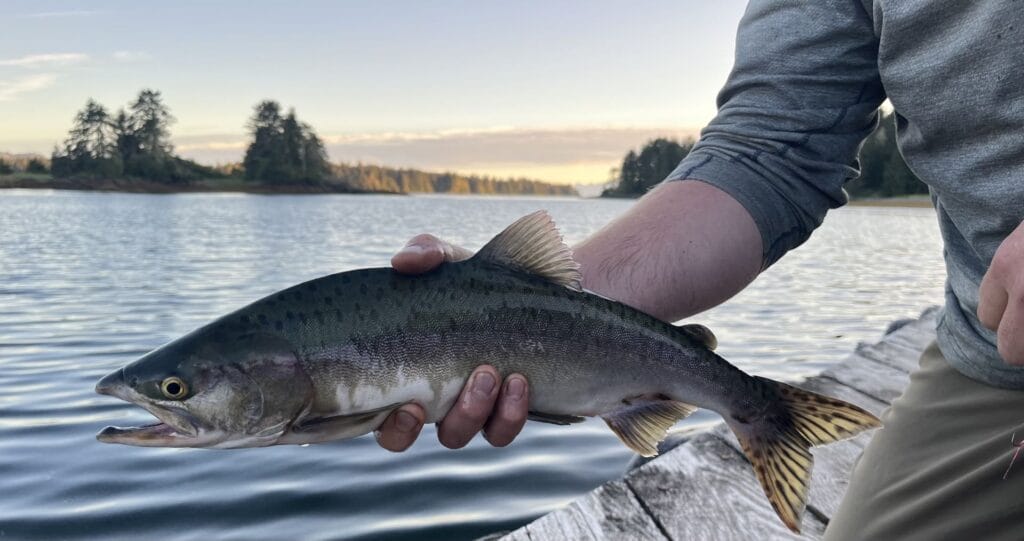
Efforts before the construction
Before TU completed this work, Alaska staff and the U.S. Forest Service met with the Organized Village of Kake to help prioritize projects on the nearby island. Kuiu Island hosts important fishing and hunting grounds for the residents of Kake and was home to Tlingit villages before a century of colonial impacts decimated its population, forcing survivors to relocate to nearby villages. Combining the input of the Tribal people along with other partners helped identify which projects would have the biggest benefit to fish and wildlife as well as the communities.
“Restoration work isn’t just reconnecting fragmented fish-bearing streams and bringing healthy habitat back to degraded waters that would forever suffer without intervention,” said Aaron Prussian, Trout Unlimited’s Alaska habitat restoration director. “It’s about working collaboratively across federal agencies, tribes, non-profits and communities to invest in the fish and wildlife that drive so much of southeast Alaska’s economy and culture and benefit us all.”
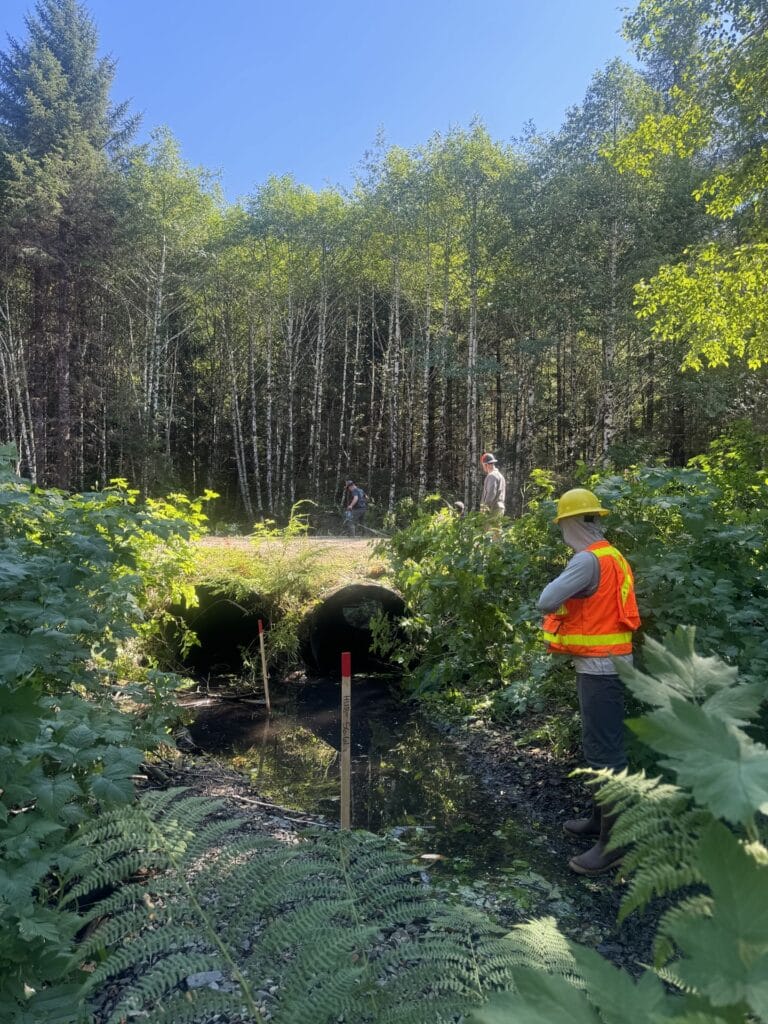
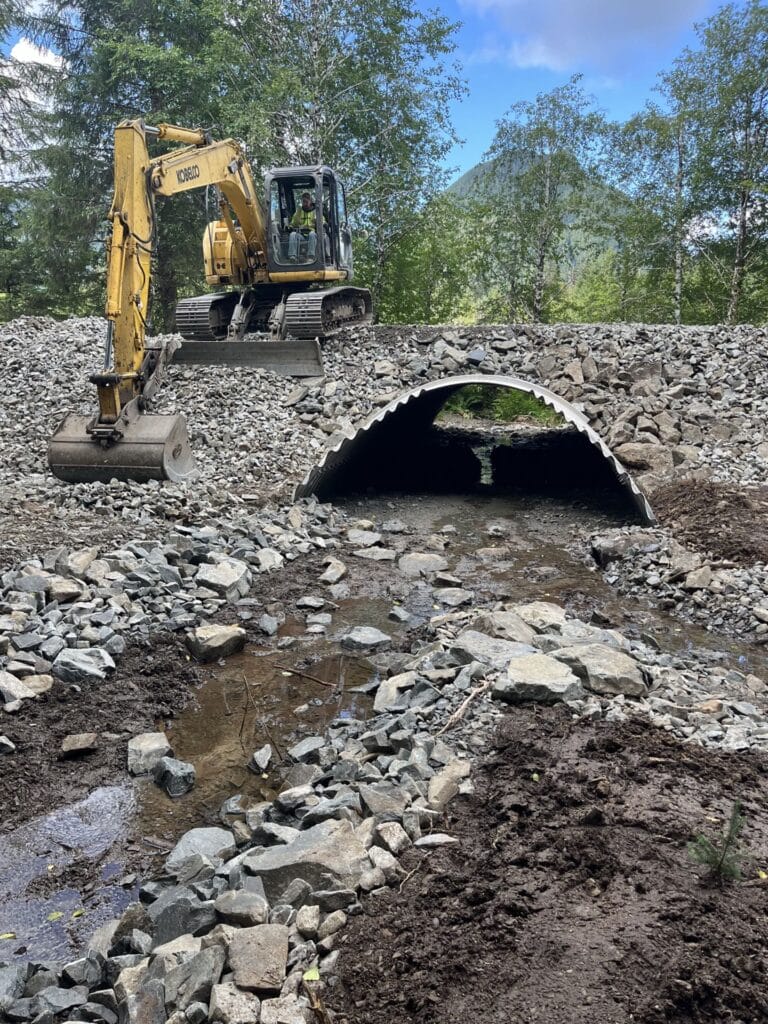
Before and after shots of one of the new culverts that reconnected critical spawning and rearing habitat
It takes a village
Trout Unlimited isn’t the only organization working to restore fish habitat on the island. The Ke’ex Kwan Native Forest Partnership, Southeast Alaska Watershed Coalition and Forest Service also completed a major restoration project on Shorty Creek this year. Together they completed one mile of instream restoration and 10 acres of floodplain restoration to benefit the stream’s coho, chum and pink salmon populations.
Soon after they were finished, TU began restoring and reconnecting habitat along the Kuiu mainline road on either side of the Shorty Creek project. The saying “it takes a village to raise a child” can also be said for restoring salmon habitat. The power of regional partnerships and collaboration amplifies the work that any one organization can do and results in major benefits across an entire region and watershed.
There is nothing easy about completing restoration work, and that gets even harder when you are on a remote island in the largest national forest in our country. Kuiu Island is 750 square miles with very few full-time residents and no airports. Getting all the people, equipment and materials onto the job site is as difficult as you might think.
Kuiu Island has more than 100 miles of roads, but they are far from fast-moving highways. These are logging roads that cross fish bearing streams with little infrastructure to support large-scale projects. Materials must first be trucked across the country to Seattle, then shipped on a barge all the way to Petersburg, then offloaded and put onto another smaller barge to be transported another 100 miles to the island. Everything is then loaded up into dump trucks and trailers and carted to its destination in the depths of Kuiu.
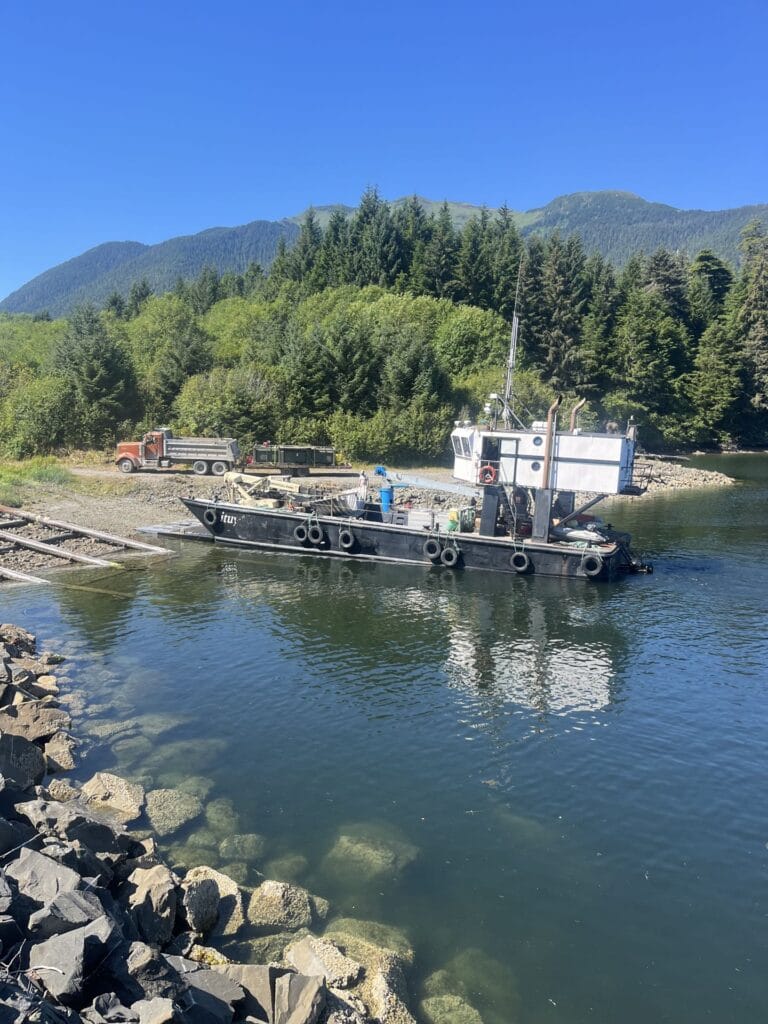
materials to Kuiu.
Any hitch in the supply chain could derail the plan at any time.
When two of the culverts arrived missing bolts and with no local hardware store, the work came to a screeching halt. Over the next thirty-six hours, phone calls to every single industrial bolt wholesaler in the state of Alaska could not replace these critical missing pieces.
The contractors tasked with constructing the project had already mobilized to the island at the time of this delay. Reid Brothers Construction is a third-generation, family-owned business from nearby Petersburg that was founded in 1945. The current owners, brothers Tyler and Bosjun, took over in 2022. When the initial scope of work was stalled, TU worked with the Forest Service and Reid brothers to develop additional projects that would make use of the manpower and equipment already on the island. As part of that effort, five failing culverts that fragmented fish habitat were removed and over four miles of high-risk road were “stored” by removing 54 old culverts that altered stream hydrology. Road storage stabilizes and restores old roads that impact their surrounding environment. The final fish-friendly culverts were installed once the missing bolts were located.
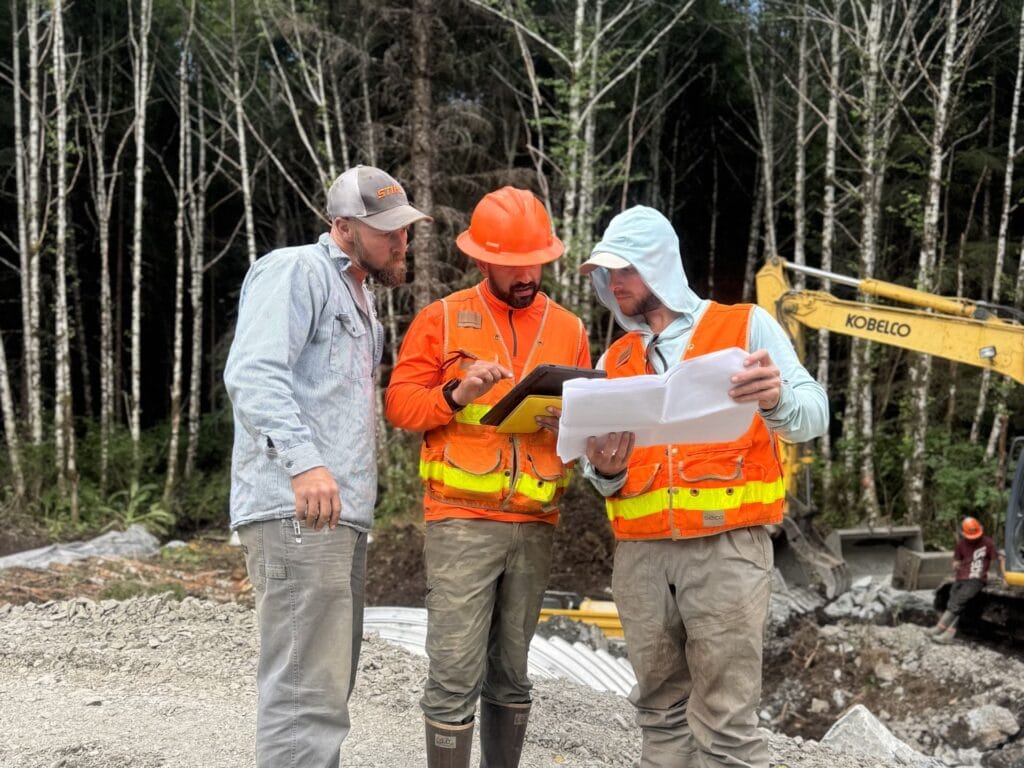
“As a local Southeast contractor, we are excited about building structures that improve habitat in areas that we personally hunt and fish,” said Bosjun Reid, owner and operator of Reid Brothers Construction. “We put forward our absolute best efforts to provide the highest quality installations that we can. Putting forth the extra effort into these restorations is important to us, as this work will enhance our local and regional resources for decades to come.”
Finally, after years of planning, collaboration with partner organizations and impacted communities and unrelenting efforts in the face of unforeseen challenges, the project was complete.
Thanks to the determination and ingenuity of TU, Forest Service and Reid Brothers staff, it was bigger and better than originally planned. These almost two miles of reconnected habitat provide critical spawning and rearing grounds for salmon and resident fish. This project also made Kuiu’s mainline road more durable and flood resilient to better maintain access to fishing, hunting and subsistence use.
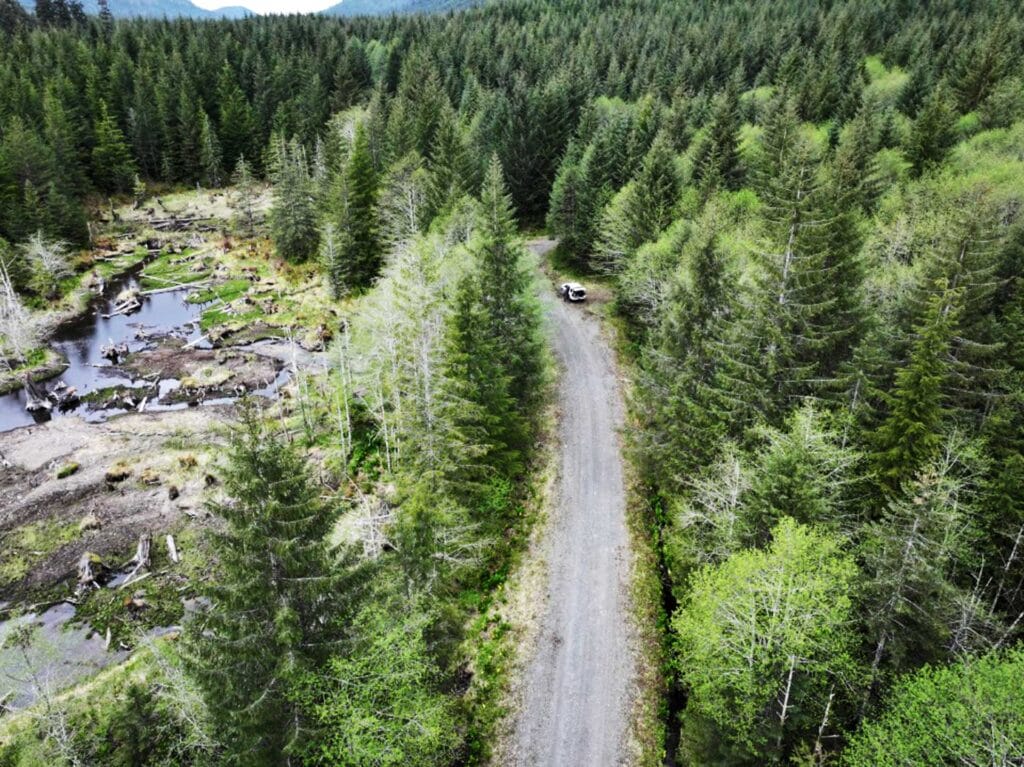
This project is part of a nationwide watershed restoration partnership between TU and the U.S. Forest Service supported by funding from the Bipartisan Infrastructure Law and the Inflation Reduction Act. Over the next several years, an additional $3.2 million of that funding and $4.3 million from NOAA Fisheries will be invested in restoring the Tongass through TU projects.
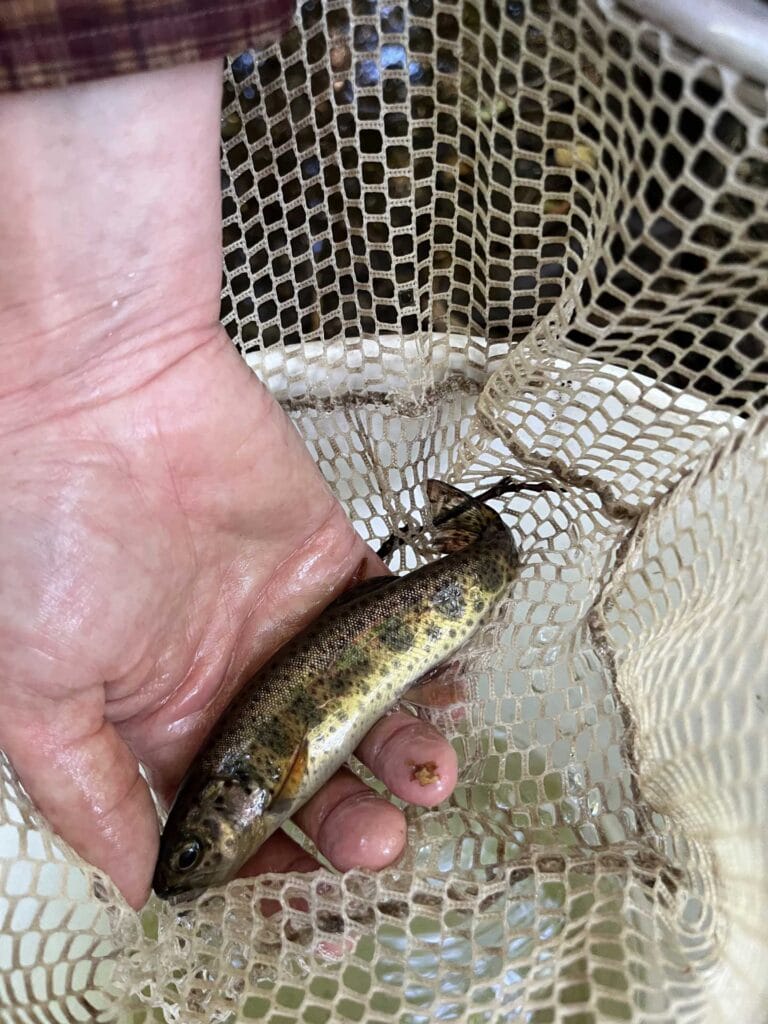
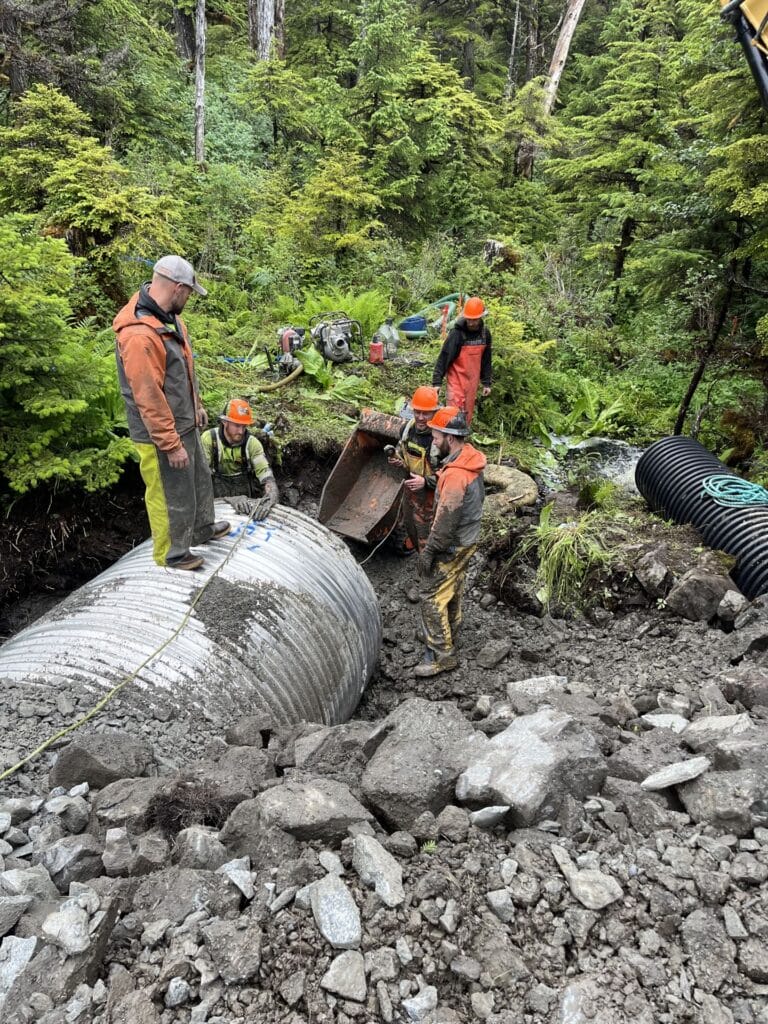
This rainbow trout was netted and removed from the stream during the culvert construction. They are one of the many species who benefit from the reconnected habitat.
The Kuiu project, along with future restoration projects planned near Yakutat, Wrangell and on Prince of Wales Island, have wide-reaching impacts. They bolster fish populations, which benefits local wildlife and communities. They also support local economies by creating jobs during construction and by improving natural resources that help support tourism and fishing, which account for nearly a quarter of Southeast Alaska’s jobs.
The remote locations and challenging terrain make these projects difficult, but if the work on Kuiu is any indication, then we can count on a diverse group of southeast Alaskans to work collectively and efficiently to get them done.


Comments